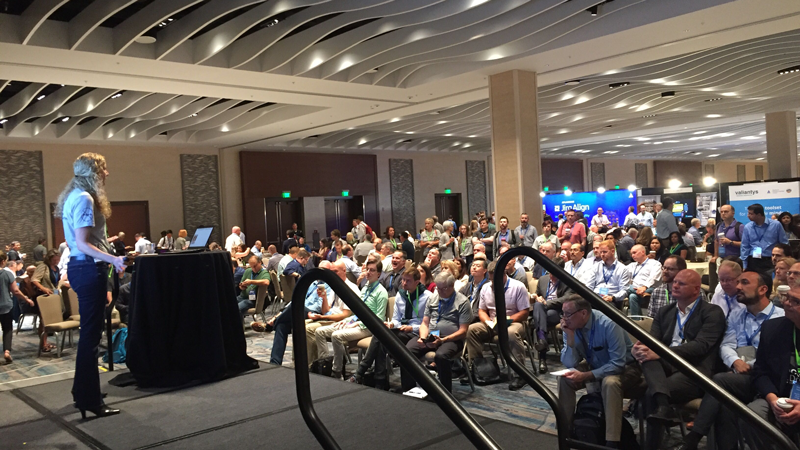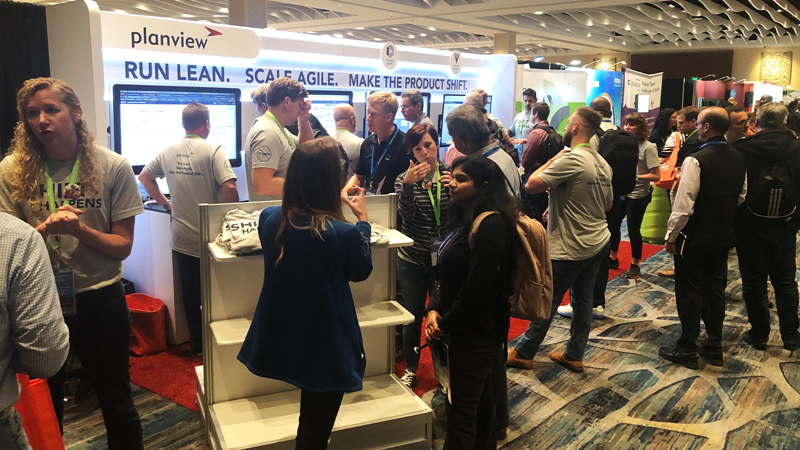
As I sat in the airport last week, I saw people running to catch their flights, others meandering with time to kill, and a few others waiting patiently in line to rebook a missed or cancelled flight. Sometimes travel is very predictable while other times it’s fraught with delays, the unknown, and frustrations. As I reflect on the 2019 Global SAFe® Summit, I still have the feeling of a wearied traveler; not just because I was on my feet for two full days, but because I engaged with many people over the course of the conference who are running, meandering, and waiting patiently as their organizations undergo an Agile transformation.
Similar to airline travel, the conference itself was at times predictable and other times not so much. Scaled Agile, Inc. (SAI) provided attendees the opportunity to take a few days away from their day-to-day to learn, talk to others, and re-energize. I talked with some folks whose Agile transformation is currently running pretty smoothly, and others who hit delay upon delay upon delay. The great thing is that over the last several years, I’ve seen more and more organizations embark upon this journey. We’ve learned a lot from them and continue to learn as other organizations decide they need to shift and transform in order to survive in today’s economy.
One big thing we’ve learned is that organizations must have leadership on board to fully transform AND support a mindset/culture shift. There’s a lot of research out there supporting this notion, but I cannot emphasize it enough. From the customer sessions I listened to, the organizations that are seeing success in their overall transformation are those that embrace servant leadership from the top down and bottom up, along with changing the way they incentivize their employees.
Having a Lean-Agile mindset isn’t simply saying, “I support the organization’s shift to Lean-Agile.” It’s way more than that. It’s shifting the way you think about the end goal in your organization—no longer focusing so much on making money but instead on delighting the customer. If your organization can do this well, then the profits will come with happier customers who stay with you and buy more. But, the first step is shifting from overseeing work to enabling people to do their best work. This is why you hire Lean-Agile leaders, or servant leaders, and move those who are not servant leaders (or who simply will never be servant leaders) to different roles or allow them to seek a new adventure elsewhere.
With a focus on customers and servant leadership, organizations have the beginnings of what is needed to evolve, to shift, and to embrace the continuous improvement needed to truly transform. This isn’t an easy change. But you’ll have more success if you start to build, test, and learn as you go. The knowledge comes from allowing your Agile teams and teams of teams to release iteratively, gain feedback from customers and the market, and implement their learnings for better products and services.
For organizations that are already down the path of an Agile transformation, I heard about more tactical challenges. I heard a lot of organizations getting stuck at the team of teams (ART) level—hitting a delay in how they are able to scale Agile. After all the effort to organize into ARTs and teams of teams, enterprises continue to face alignment issues. People admit to delivering faster, but as they scale Agile, organizations are struggling to understand how their stories, features, or epics will result in the outcomes they need to achieve business goals, which means they’re working to work, not working to deliver value against the corporate goals and objectives. Because this is where people are struggling—it resulted in Lean Portfolio Management (LPM) presentations about LPM as the answer to solving alignment rather than what LPM actually does for an organization.
Lean Portfolio Management is the enabler for alignment. LPM isn’t going to magically solve your alignment issue; instead, LPM enables Lean governance, Lean budgeting and continuous planning. This layer threads the corporate strategic objectives and goals through to the Agile delivery engine you’ve created. This layer of management must be just as nimble and iterative as your Agile teams.
Where the two main points I am making come together is how leadership helps to align and enable Lean Portfolio Management to create change within the organization. Leadership’s role in the transformation is to define those strategic objectives and goals. They define the destination and the strategic results needed, so they can fund the travel to get there, fast. It’s up to the LPM layer in your organization to take the information leadership provides and help the value streams deliver against those objectives and goals set forth.
This message is what was missing from the LPM sessions I attended at the SAFe Summit. I’m hoping over the next year, the importance that leadership plays starts to bubble up more, as it’s truly the difference between an organization’s Agile transformation having success or hitting delay after delay after delay.
Find your ticket to successful implementation of LPM with these two eBooks: Lean Portfolio Management for the Enterprise and Lean Portfolio Management for the PMO.






